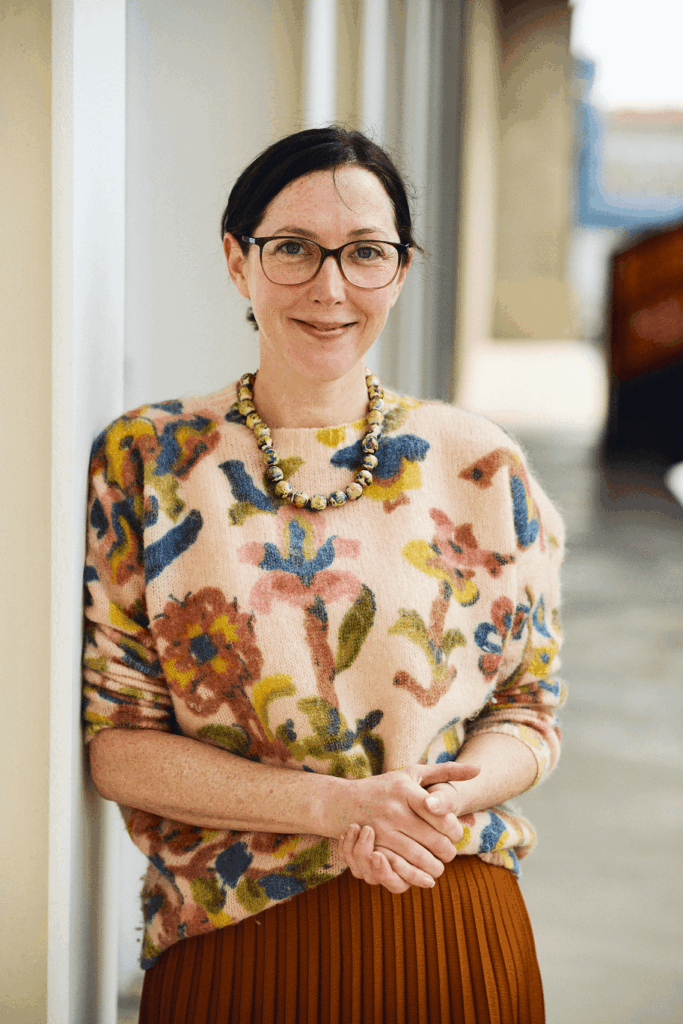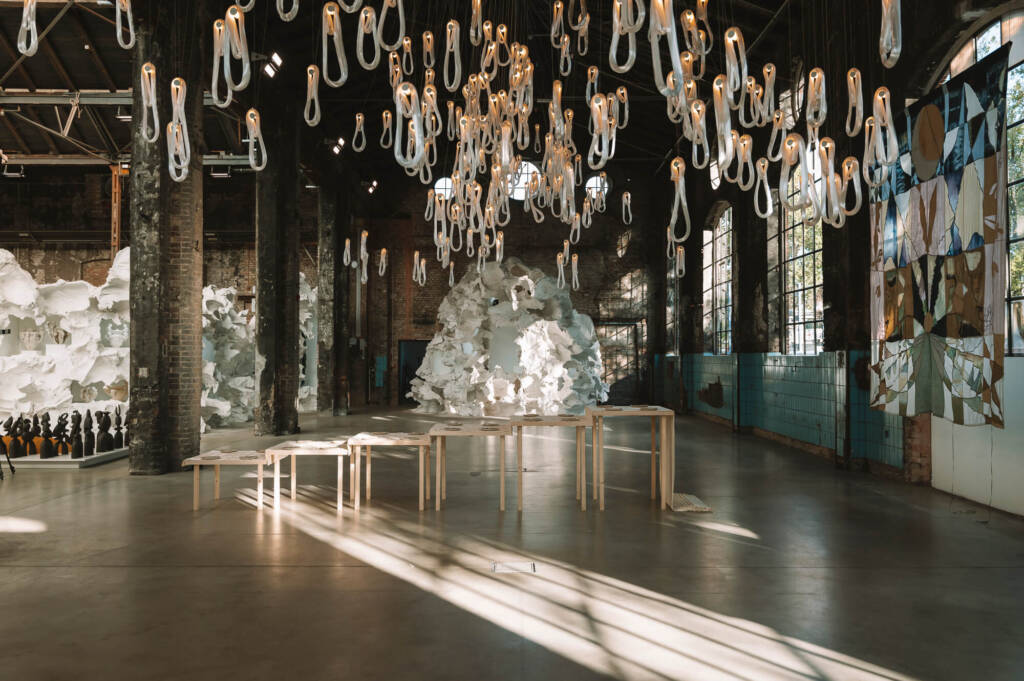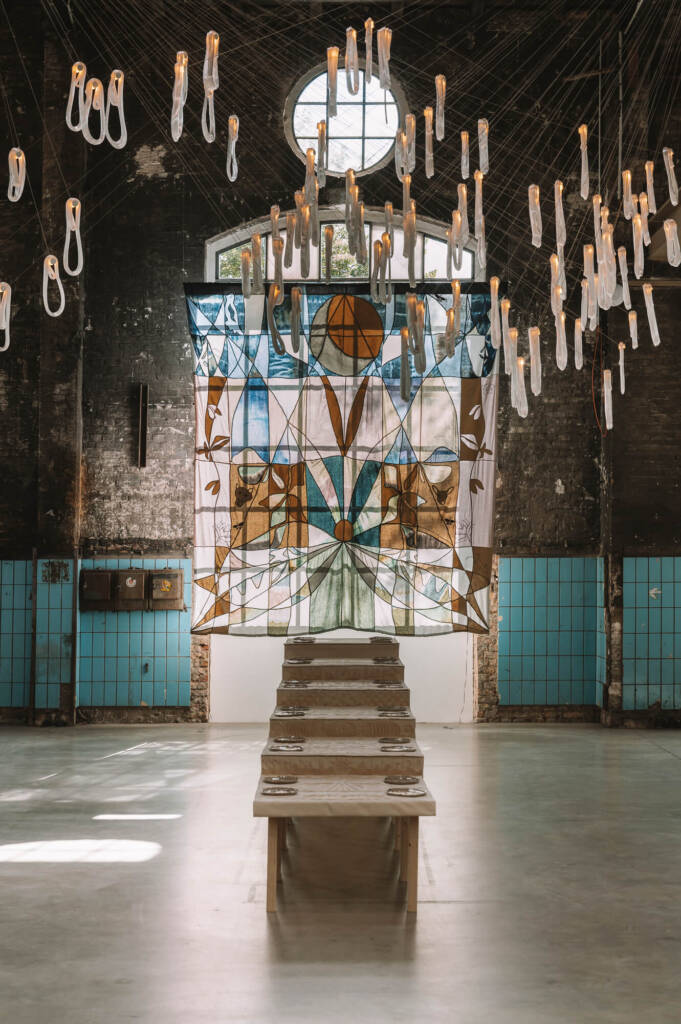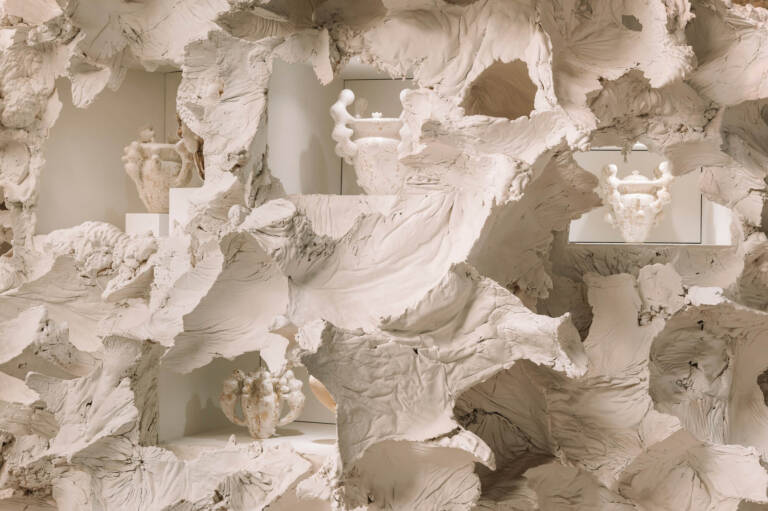This fall in Berlin, Bocci and Anna Carnick unveiled their joint presentation Crafting Community—an ambitious project rooted in activism through narrative design. Founded in 2005 under the creative direction of Omer Arbel and Randy Bishop, Bocci has, over the past two decades, built a reputation for pushing the boundaries of material experimentation in glass, concrete, and hybrid composites—resulting in awe-inspiring design and architectural installations.
Anna Carnick, meanwhile, has established herself as a curator, editor, and connector of global design voices. Based in Berlin for several years, she has curated high-profile exhibitions and programs worldwide—from Design Miami to Milan’s 5VIE—while co-founding Anava Projects, a platform supporting socially and environmentally engaged design.
Their collaboration on Crafting Community is a meeting of shared convictions. Bocci contributed not only its brand and platform but also its physical venue—The Foundry at Berlin’s historic Wilhelm Hallen—which hosted the show. Carnick brought her curatorial vision, inviting 19 international artists and designers from across continents and disciplines to reflect on craft, identity, and shared agency. The result was a non-commercial, narrative-rich exhibition highlighting the powerful intersection of material innovation, community memory, and collective care.
Shortly after the opening of Crafting Community, we met with Anna Carnick and Johannes Schön, Bocci’s Director of Brand and Cultural Strategy, to talk about the ideas behind the exhibition—from the politics of craft and the poetics of material, to the ways design can foster connection and collective care.
hube: In gathering 19 designers from across the globe, what guided your selection process—was it material, technique, personal or collective story, political context? How did you balance individuality with coherence, so that each work didn’t just coexist but actively spoke to one another within the idea of ‘community’?
Anna Carnick: It was a combination of all of the above, really. Crafting Community features works by artists and designers from around the globe committed to creating as a cultural, social, and often collective act. The exhibited pieces are exceptionally crafted objects conceived as offerings from the maker to their community. The participants all approach their practices as raconteurs and share their stories through a variety of carefully considered materials, processes, and forms. The resulting narrative-driven works are composed using craft traditions passed down over generations, as well as innovative, experimental processes. Whether woven, poured, or sculpted, every piece is a meticulously crafted testament to lived experience. No single story can ever fully define a time or place. In presenting multiple voices in conversation, all of whom centre community, the works speak to the importance of sharing our stories: honouring what makes our experiences unique and also recognising the ties that bind us. In this way, they centre our universal human dignity.
h: Bocci often blurs the line between art, design, and experience. How do you see the brand’s influence resonating within the conversations Crafting Community sparks?
Johannes Schön: Bocci has never been one thing. Light, architecture, objects, and material research are all treated with equal value, as expressions of ideas and methods of making that unfold across multiple media and scales. Many of our projects begin as experiments, sometimes as accidents, and only later settle into form—and that outlook is mirrored in Crafting Community. The exhibition gathers voices from different geographies and traditions, placing them side by side without forcing them into a single definition. Our role is less to assert what these practices mean than to host a space where they can be encountered on equal footing, resonating with each other and with the audience in unexpected ways.

Photography by PAUL BARBERA

Photography by KARLA VINTER KOCH

Photography by CLEMENS POLOCZEK

Photography by CLEMENS POLOCZEK

Photography by CLEMENS POLOCZEK

Photography by CLEMENS POLOCZEK

